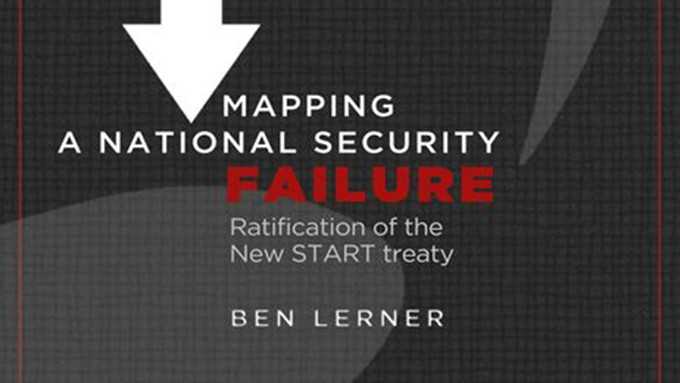Mapping a National Security Failure: Ratification of the New START Treaty

 On December 22, 2010, the United States Senate voted to ratify the Treaty Between the United States of America and the Russian Federation on Measures for the Further Reduction and Limitation of Strategic Offensive Arms—known more popularly as the New Strategic Arms Reduction Treaty, or “New START.” At its most basic level, New START imposed ceilings on the number of strategic nuclear warheads and launchers that could be deployed by the United States or Russia. Substantively, however, New START was a severely flawed treaty with numerous negative implications for U.S. national security, both in terms of what the treaty outlined in its text as well as what was omitted from it.
On December 22, 2010, the United States Senate voted to ratify the Treaty Between the United States of America and the Russian Federation on Measures for the Further Reduction and Limitation of Strategic Offensive Arms—known more popularly as the New Strategic Arms Reduction Treaty, or “New START.” At its most basic level, New START imposed ceilings on the number of strategic nuclear warheads and launchers that could be deployed by the United States or Russia. Substantively, however, New START was a severely flawed treaty with numerous negative implications for U.S. national security, both in terms of what the treaty outlined in its text as well as what was omitted from it.
Equally problematic, New START was pushed through the Senate through a flawed process that emphasized speedy ratification at the expense of fully informed and balanced deliberation, particularly with respect to missile defense, and that enabled the Obama administration to use questionable pledges of nuclear modernization to persuade key Senators to vote in favor of the treaty—pledges that can reasonably be called into question given subsequent developments.
In order to fully understand the substantive and procedural pitfalls that came to define the New START treaty and the push for its ratification, it is necessary first to place the treaty in the context of two of the Obama administration’s major foreign policy objectives: 1) the intent to “reset” the U.S. relationship with Russia; and 2) the desire to bring about a “world without nuclear weapons.”
RUSSIAN “RESET”
The Obama administration’s prioritization of U.S.-Russia relations manifested itself early, at the highest levels. On February 7, 2009, Vice President Joseph Biden addressed the 45th Munich Conference on Security Policy, during which he stated in part:
The United States rejects the notion that NATO’s gain is Russia’s loss, or that Russia’s strength is NATO’s weakness. The last few years have seen a dangerous drift in relations between Russia and the members of our Alliance. It is time—to paraphrase President Obama—it’s time to press the reset button and to revisit the many areas where we can and should be working together with Russia.[1]
Secretary of State Hillary Clinton would famously follow up on Vice President Biden’s address with a visit to Russia’s then-Foreign Minister Sergei Lavrov, presenting him with a prop “reset button” as an official (if theatrical) signal that the Obama administration was seeking a renewed relationship with Russia.
- Trump’s Election Was a Win in the Fight to Keep Gitmo Open - January 4, 2017
- NDAA and the Counter-Drone Challenge - December 23, 2016
- NDAA Takes On Counter-Drone Challenge - December 8, 2016
